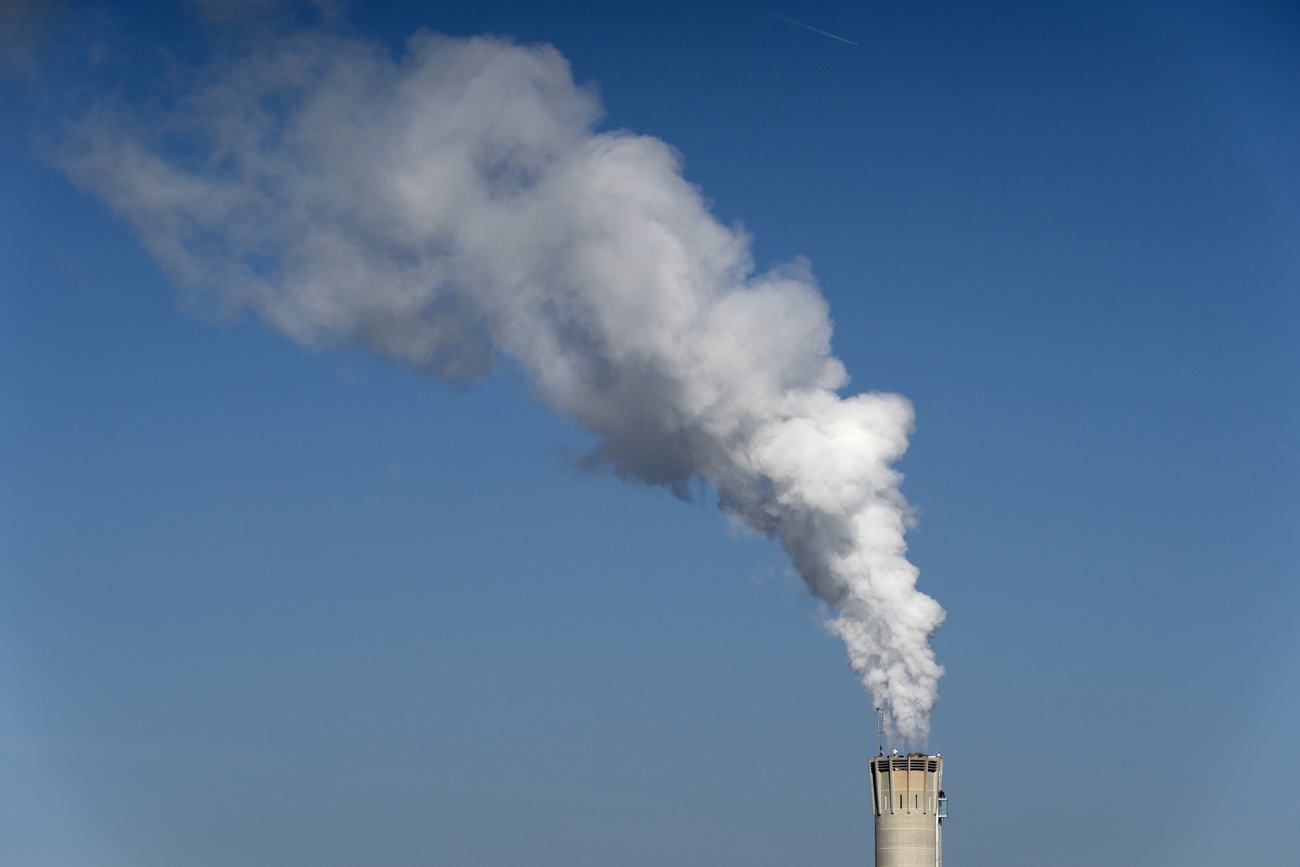
How CO₂ from Swiss rubbish could end up beneath the North Sea

Waste incineration plants in Switzerland plan to capture the carbon dioxide coming out of their chimneys and store it at the bottom of the sea. The Green Party likes the idea but several hurdles remain.
“The previous generation created sewers to recover and treat waste water (…) Our generation must create a similar network for CO2,” wrote the Swiss Association of Waste Treatment Plant Operators (ASIR) in a letter addressed to Swiss President Simonetta Sommaruga.
Within the framework of the Paris Climate Agreement, Switzerland has committed itself to drastically reducing its emissions. Like a number of other countries, it has set itself the goal of achieving a net emissions balance of zero by 2050. ASIR argues it would therefore be “ecologically and economically sensible” to prevent CO2 from being released into the atmosphere and to capture it where it is produced – like in incinerators, for example.
“We want to be actors in the energy transition,” Daniel Baillifard, manager of the Satom waste treatment plant in Monthey, western Switzerland, told swissinfo.ch. His intention is to equip his furnaces with a CO2-capture system. A pilot project which, together with that of the incinerator in Linth in eastern Switzerland, could serve as a model for the whole country.
What to do with the CO2?
The 30 incinerators in operation in Switzerland process around four million tonnes of waste a year. They are responsible for around 5% of the country’s total emissions. Half of the emissions coming out of the chimneys are of fossil fuel origin (e.g. plastic waste). The other half come from biomass (e.g. wood, building waste).
“The fact that we also capture the CO2 generated by biomass, that’s to say material that would have decomposed in nature, allows us to be in the minus from an emissions point of view because we remove gas from the atmosphere,” Baillifard says. But he says this raises a crucial question: what to do with the CO2?
For ASIR, the only viable solution is permanent storage in geological deposits – deep inside the Earth.
To Norway via Genoa
Permanent CO2 storage in Switzerland is currently impossible. A detailed and systematic analysis of the subsoil is required first, ASIR says. However, the industry association sees the possibility – in ten or 20 years – of storing the gas in Swiss saline aquifers at a depth of 800-2,500 metres. In the meantime, it’s looking to the north of Europe.
Norway, which has been sequestering CO2 in old natural gas fields under the North Sea since the late 1990s, has announced that it is prepared to accept CO2 from other countries from 2024. Storage capacity at sea is estimated at 70 billion tonnes, about 20 times the annual emissions of the European Union.
According to a feasibility study by the Business in Sustainability Lab of the federal technology institute ETH Zurich, the cheapest way to transport the CO2 from Swiss waste to Norway would be through a network of pipelines. An opportunity which for the Monthey plant is literally just around the corner.
“A few hundred metres away is the old Tamoil refinery, which closed in 2015. And there’s the outlet of the Rhone pipeline, which is now unused,” Baillifard explains. The 242km-long pipeline connects the Valais, where Monthey is located, with the Italian port of Genoa.
From Genoa, Swiss CO2 would be transported north by ship. “We could become a hub for the collection of CO2 in Switzerland with a view to exporting it,” Baillifard says.
Political, technological and financial challenge
The government has already announced its support, stressing that the capture and storage of CO2 emissions will play an important role in achieving its climate targets.
However, in order to realise his project, Baillifard must overcome a number of obstacles. First, at the political level. “We need legal basis and international agreements to regulate the capture and transport of CO2, the export of which is currently banned,” he says.
Then there’s the technological aspect. Similar pilot projects have been launched in Norway, Ireland and New Zealand; in Switzerland in 2017 the world’s first industrial plant capable of capturing and exploiting CO2 in the atmosphere went into operation. However, the technology is “not yet mature”, he says. “We plan to invest CHF40 million ($43.4 million). We can’t get it wrong; we need certainty.”
Last but not least is the economics. The price of transporting and storing one tonne of CO2 is currently estimated at CHF340, which is too much to guarantee financial sustainability. “Cement factories and the chemical industry could also participate. The more plants that connect to the CO2 network, the lower the price,” Baillifard says.
Risk to the marine ecosystem
Capturing CO2 on a large scale is crucial for achieving climate neutrality, says Bastien Girod, president of ASIR and a Green Party parliamentarian.
In addition to reducing consumption, increasing energy efficiency and developing renewables, it’s necessary to create natural and technical carbon reservoirs, says the Green Party, which would like to see a net zero emissions balance as early as 2040.
Georg Klingler from environmental organisation Greenpeace Switzerland is more sceptical. “It hasn’t yet been proven that the CO2 we pump into these geological layers really remains there. We can’t rule out leaks. A CO2 leak into the sea would endanger the marine ecosystem,” he told Swiss public broadcaster RTS.
In general, Greenpeace considers this technology to be too energy-intensive and expensive – with the risk that this is used as an excuse to continue burning coal, oil and gas.
Daniel Baillifard is aware that his CO2 capture project does not encourage a reduction in the use of fossil fuels. “It bothers me to play the game of the fossil fuel industry. But we have to be realistic: the turning point will not come tomorrow. But by capturing and storing CO2 we can accelerate the transition.”
Translated from Italian by Thomas Stephens.
Translated from Italian by Thomas Stephens

In compliance with the JTI standards
More: SWI swissinfo.ch certified by the Journalism Trust Initiative




























You can find an overview of ongoing debates with our journalists here . Please join us!
If you want to start a conversation about a topic raised in this article or want to report factual errors, email us at english@swissinfo.ch.